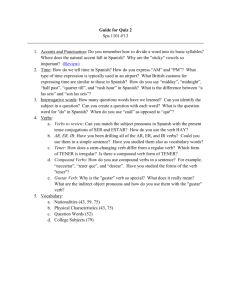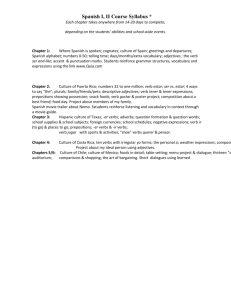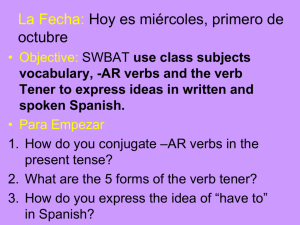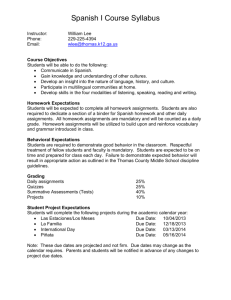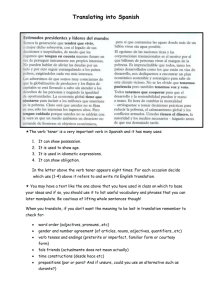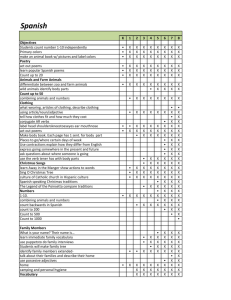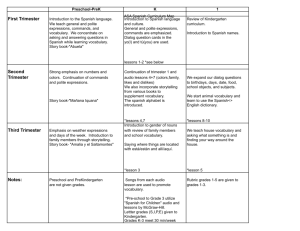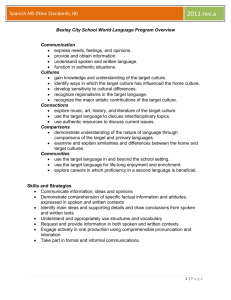Guide to Quiz 2
advertisement
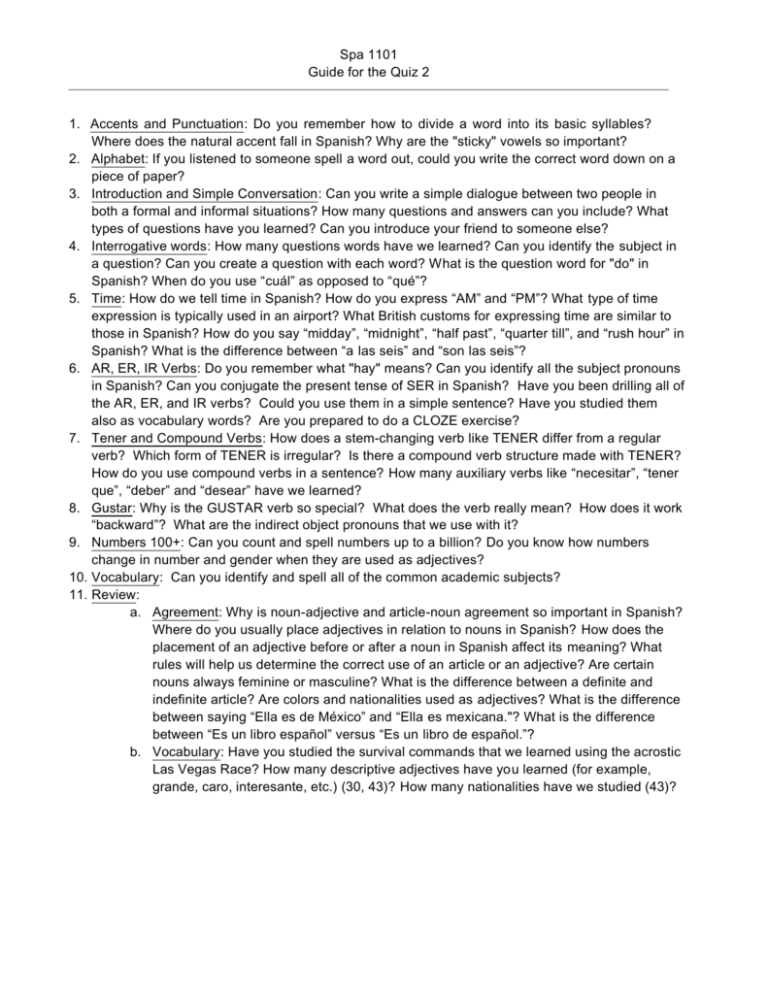
Spa 1101 Guide for the Quiz 2 1. Accents and Punctuation: Do you remember how to divide a word into its basic syllables? Where does the natural accent fall in Spanish? Why are the "sticky" vowels so important? 2. Alphabet: If you listened to someone spell a word out, could you write the correct word down on a piece of paper? 3. Introduction and Simple Conversation: Can you write a simple dialogue between two people in both a formal and informal situations? How many questions and answers can you include? What types of questions have you learned? Can you introduce your friend to someone else? 4. Interrogative words: How many questions words have we learned? Can you identify the subject in a question? Can you create a question with each word? What is the question word for "do" in Spanish? When do you use “cuál” as opposed to “qué”? 5. Time: How do we tell time in Spanish? How do you express “AM” and “PM”? What type of time expression is typically used in an airport? What British customs for expressing time are similar to those in Spanish? How do you say “midday”, “midnight”, “half past”, “quarter till”, and “rush hour” in Spanish? What is the difference between “a las seis” and “son las seis”? 6. AR, ER, IR Verbs: Do you remember what "hay" means? Can you identify all the subject pronouns in Spanish? Can you conjugate the present tense of SER in Spanish? Have you been drilling all of the AR, ER, and IR verbs? Could you use them in a simple sentence? Have you studied them also as vocabulary words? Are you prepared to do a CLOZE exercise? 7. Tener and Compound Verbs: How does a stem-changing verb like TENER differ from a regular verb? Which form of TENER is irregular? Is there a compound verb structure made with TENER? How do you use compound verbs in a sentence? How many auxiliary verbs like “necesitar”, “tener que”, “deber” and “desear” have we learned? 8. Gustar: Why is the GUSTAR verb so special? What does the verb really mean? How does it work “backward”? What are the indirect object pronouns that we use with it? 9. Numbers 100+: Can you count and spell numbers up to a billion? Do you know how numbers change in number and gender when they are used as adjectives? 10. Vocabulary: Can you identify and spell all of the common academic subjects? 11. Review: a. Agreement: Why is noun-adjective and article-noun agreement so important in Spanish? Where do you usually place adjectives in relation to nouns in Spanish? How does the placement of an adjective before or after a noun in Spanish affect its meaning? What rules will help us determine the correct use of an article or an adjective? Are certain nouns always feminine or masculine? What is the difference between a definite and indefinite article? Are colors and nationalities used as adjectives? What is the difference between saying “Ella es de México” and “Ella es mexicana."? What is the difference between “Es un libro español” versus “Es un libro de español.”? b. Vocabulary: Have you studied the survival commands that we learned using the acrostic Las Vegas Race? How many descriptive adjectives have you learned (for example, grande, caro, interesante, etc.) (30, 43)? How many nationalities have we studied (43)?
